Nitin Singhania Summary: Indian Paintings- 2 | History for UPSC CSE PDF Download
Illustrated Manuscripts
- Illustrated Manuscripts are visual interpretations of poetic verses from various texts, featuring handwritten verses in designated box-like spaces on paintings.
- Manuscript illustrations were systematically organized in thematic sets, often comprising multiple loose paintings or folios.
- These artifacts were highly valued and considered precious; they were commonly given as dowries to princesses and exchanged as gifts between kings and courtiers.
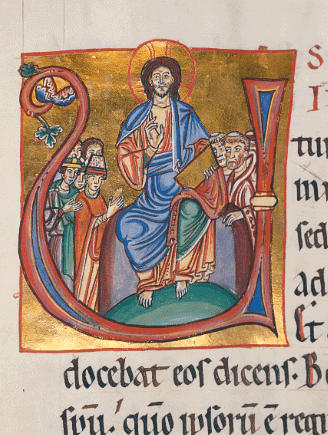 Manuscript
Manuscript
- The Pala rulers of Bengal and Bihar initiated the tradition of illustrating Buddhist scriptures on palm leaves, with a notable manuscript developed during the reign of Pala King Ramapala in the 11th century.
- Under Jainism, the practice of shaastradaan (donation of books) gained popularity, involving the donation of illustrated manuscripts to monastery libraries known as bhandars.
- Jain illustrated manuscripts were traditionally created on palm leaves before the introduction of paper in the 14th century. These paintings often featured lavish use of gold and lapis lazuli, reflecting the wealth and social status of patrons.
- Subjects in Jain illustrated manuscripts included Tirthipatas, Mandalas, and secular, non-canonical stories.
- During medieval times, each Mughal successor played a role in elevating the status of illustrated manuscripts.
Modern Indian Painting
A. Company Painting (Kampani Kalam)
- Emerged during the colonial period as a hybrid style blending Rajput, Mughal, and Indian elements with European influences.
- Developed when British East India Company officers enlisted painters trained in Indian styles.
- Known for combining European tastes with Indian sensibilities.
- Distinguished by the use of watercolor, linear perspective, and shading techniques.
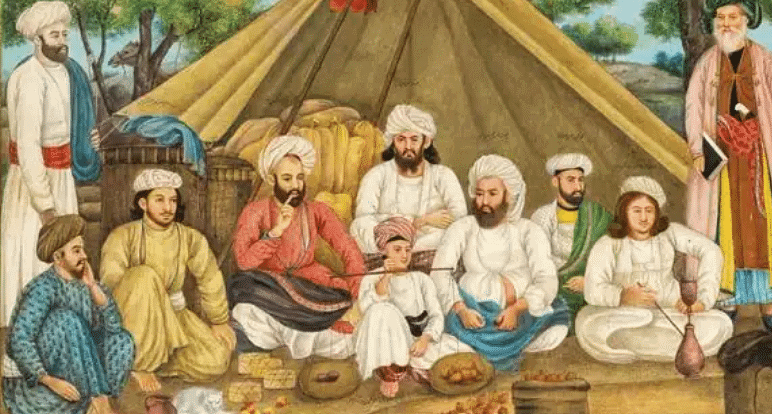 Kampani Kalam
Kampani Kalam
- Originated in various Indian cities including Kolkata, Chennai, Delhi, Patna, Varanasi, and Thanjavur.
- Patronized by figures like Mary Impey and Marquess Wellesley, focusing on depicting India's flora and fauna.
B. Bazaar Paintings
- A distinct school influenced by the European encounter in India.
- Differs from Company Paintings by not incorporating Indian influences but absorbing Roman and Greek inspirations.
- Prominent in the Bengal and Bihar region.
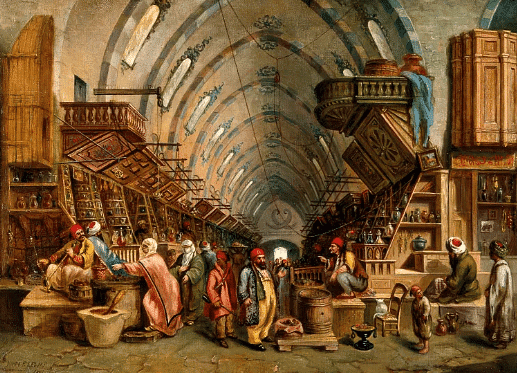 Bazaar Paintings
Bazaar Paintings
- Artists were commissioned to replicate Greek and Roman statues.
- Depicts everyday bazaars against a European backdrop.
- Themes include Indian courtesans dancing before British officials.
- Prohibited depictions of Indian deities with more than two axes or features like elephant faces, deviating from European notions of natural human figurines.
Bengal School of Art
Bengal School originated as a reaction against existing painting styles and is characterized by the use of simple colors.
Abanindranath Tagore, a pioneer in the early 20th century, conceptualized the idea, incorporating Swadeshi values and influencing global art with the Arabian Night series.
Abanindranath Tagore aimed to diminish the influence of Western materialistic styles in Indian art, evident in works like "Bharat Mata" (1905) and Mughal-influenced paintings.
Bengal School painters, including Abanindranath Tagore, rejected Raja Ravi Verma's art as imitative and westernized.
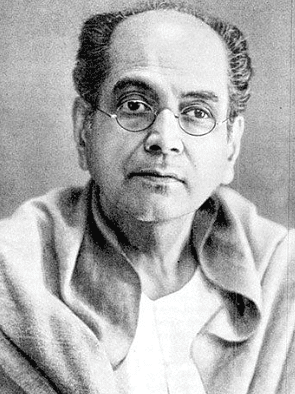 Abanindranath Tagore
Abanindranath Tagore
Nandalal Bose, associated with Santiniketan, significantly contributed to the development of Modern Indian Art within the Bengal School.
Nandalal Bose is renowned for the iconic white-on-black Gandhi sketch of the Dandi March during the 1930s and illustrating the original document of the Constitution of India.
Rabindranath Tagore, another famous painter of the Bengal School, employed dominant black lines to emphasize subjects and created small-sized paintings, with potential links to his writings.
Other notable painters of the Bengal School include Asit Kumar Haldar, Manishi Dey, Mukul Dey, Sunayani Devi, among others, each contributing to the unique characteristics and development of the school.
Folk Paintings
Pichhwai Painting
- Traditional Indian art with origins in Rajasthan, mainly Nathdwara.
- Features intricate paintings portraying Lord Krishna (Sreenath ji) under Vaishnavism.
- Primarily made for Hindu temples of the Pushtimarg Sampradaya, depicting tales of Lord Krishna.
- Nathdwara is a major exporter of Pichhwai paintings.
Madhubani Painting
- Traditionally done by women in villages around Madhubani town in Bihar.
- Also known as Mithila Paintings, mentioned in the Ramayana.
- Common themes include religious deities like Krishna, Rama, Durga, Lakshmi, and Shiva.
- Figures in the paintings are symbolic, incorporating elements like fish for good luck and fertility.
- Originally on walls with rice paste and vegetable colors, later transitioned to paper, cloth, and canvas.
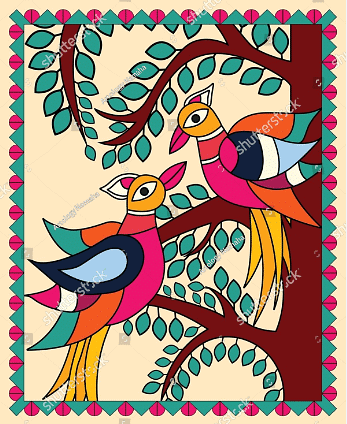 Madhubani Paintings
Madhubani Paintings
Pattachitra Painting
- Traditional painting of Odisha, with "patta" meaning canvas and "chitra" meaning picture.
- Uses cloth as a base, with colors from natural sources like burnt coconut shells and vegetable dyes.
- No pencil or charcoal; outlines drawn with a bamboo pen wound with cloth.
- Srikalahasti and Machilipatnam are main centers with distinct styles.
Kalighat Painting
- Originated near the Kalighat Temple in Kolkata in the 19th century.
- Hand-colored cloth paintings depicting Hindu Gods, Goddesses, and scenes from epics.
- Evolved to capture daily life in simple drawings, influencing painters like Jamini Roy.
 Kalighat Temple
Kalighat Temple
Warli Painting
- Originated from the Warli people in the Sahyadris, mainly on the Gujarat-Maharashtra border.
- Ritualistic paintings on walls with basic graphic vocabulary.
- Central motifs include chaukat, surrounded by scenes of fishing, hunting, farming, and festivals.
- Typically done by women for auspicious occasions.
Thangka Painting
- Practiced in Sikkim, Himachal Pradesh, Ladakh, and Arunachal Pradesh.
- Originally used for reverence in Buddhism, made by Buddhist monks and specific ethnic groups.
- Painted on a cotton canvas base with natural vegetable or mineral dyes.
- Each color has symbolic significance in depicting Buddhist ideals.
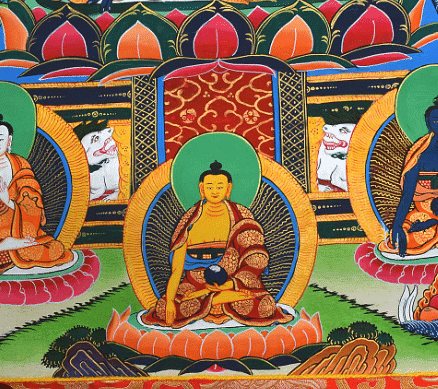 Thangka Painting
Thangka Painting
Manjusha Painting
- Belongs to the Bhagalpur region of Bihar, also known as Angika art.
- Executed on boxes of jute and paper, often referred to as snake paintings.
- Typically depicts religious and spiritual themes.
Paitkar Painting
- Practiced by tribal people in Jharkhand, considered one of the ancient forms of painting.
- Cultural association with Maa Manasa, a popular goddess in tribal households.
- Linked to social and religious customs, often exploring the theme of life after death.
 Gond Painting
Gond Painting
Gond Painting
- Practiced by tribal people in Madhya Pradesh for almost 1400 years.
- Natural elements are painted as a form of respect and reverence in line with Gond belief system.
Santhal Painting
- Drawn by a community called Jadu Patua in the Santhal tribal belts of Bengal/Bihar borders.
- Uninfluenced by Mughals, Rajput, or British, resulting in original and authentic designs.
- Uses handmade paper backed by canvas cloth, with natural vegetable colors.
|
216 videos|855 docs|219 tests
|
FAQs on Nitin Singhania Summary: Indian Paintings- 2 - History for UPSC CSE
| 1. What are illustrated manuscripts? |  |
| 2. What is the significance of illustrated manuscripts? |  |
| 3. How are folk paintings different from illustrated manuscripts? |  |
| 4. What are some famous examples of Indian illustrated manuscripts? |  |
| 5. How can one preserve and protect illustrated manuscripts? |  |





















